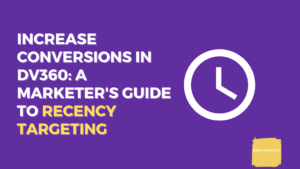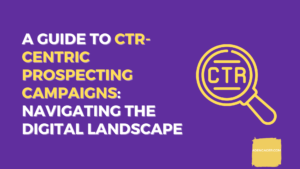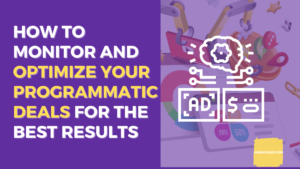Bid Shading: Optimizing Programmatic Advertising Auctions

Bid shading is more than just a catchy phrase; it’s a response to the paradigm shifts in programmatic advertising. The days of traditional advertising have waned, giving way to a digital arena where every impression, click, and conversion holds immense value. Advertisers are in a constant quest for innovative strategies that secure prime ad placements without jeopardizing profitability. This is where bid shading emerges as a game-changing concept. With the evolving ad tech landscape introducing complexities, bid shading offers a method to strike the delicate balance between winning auctions and managing costs effectively.
The rise of bid shading couldn’t be timelier. As ad auctions transition from the familiar second-price model to the intricate world of first-price auctions, advertisers find themselves navigating new waters. The shift brings challenges such as potential price surges and uncertainties in bidding strategies. Bid shading steps in as a strategic ally, providing a mechanism to navigate the nuances of the first-price auction environment. It acts as a bridge, allowing advertisers to optimize their bids intelligently, harnessing the benefits of first-price auctions while mitigating potential pitfalls.
The dynamic nature of bid shading mirrors the adaptive spirit of the ad tech landscape itself. It’s not just a buzzword but a solution that addresses the intricacies of modern advertising. This blog journey delves into the core of bid shading, unraveling its mechanisms, benefits, and its impact on publishers and advertisers alike. As we embark on this exploration, we equip ourselves with insights that will not only enhance our understanding of bid shading but also empower us to navigate the dynamic realm of programmatic advertising with newfound confidence.
What is Bid Shading?
Bid shading represents a predictive algorithm leveraged by Demand-Side Platforms (DSPs) to traverse the intricate landscape of first-price auctions. As ad exchanges and SSPs make the transition from the familiar second-price auction model to the uncharted territory of first-price auctions, bid shading stands as a beacon of equilibrium, ready to counterbalance the unsettling price surges that this transition has catalyzed.
Picture a scenario: a media buyer competes in an auction, with bids soaring. In a second-price auction, the winner pays just a cent more than the second-highest bid, providing a safeguard against overpayment. Yet, as the industry inches toward first-price auctions, the highest bidder must fork over their exact bid amount, leaving no room for the cushion of a single cent. This is where bid shading intervenes, like a skilled mediator, crafting a delicate balance between the extremes of the first-price and second-price models. It becomes the bridge that spans the gap, allowing advertisers to optimize their bids and publishers to sustain their revenue streams. Bid shading—where art and algorithm converge to forge a new bidding landscape.
Second-Price vs. First-Price Auctions
Under the conventional second-price auction, the highest bidder secures the ad placement but pays a price slightly higher than the second-highest bid. Imagine three advertisers bidding $10, $8, and $6 respectively. In this scenario, the winner pays not $10, but $8.01, maintaining transparency and protecting advertisers from overpayment.
However, the landscape has evolved, ushering in the era of first-price auctions. Here, the highest bidder doesn’t just secure the impression – they also pay precisely what they bid. Using the same bids as before, the $10 bidder now pays the full $10 for the ad slot. This shift introduces a new dimension of complexity and demands innovative solutions to navigate the challenges it presents.
As the industry pivots toward first-price auctions, the need arises for a mechanism that ensures fairness, efficiency, and optimized costs for advertisers. This is where bid shading enters the scene, offering a strategic compromise that benefits both buyers and publishers. Let’s explore bid shading and its role in balancing buyer costs while maintaining a healthy advertising ecosystem.
| Aspect | First-Price Auction | Second-Price Auction |
| Winning Bid | The highest bidder wins the auction and pays their bid. | The highest bidder wins but pays the price of the 2nd highest bid + a small increment. |
| Payment Transparency | Bidders pay the exact amount they bid. | Bidders pay slightly more than the bid of the runner-up. |
| Bid Strategy | Bidders must carefully consider their maximum bid. | Bidders can bid their true value without overpaying. |
| Risk of Overpayment | Buyers may overpay due to aggressive bidding. | Buyers are protected from overpaying due to second-highest bid. |
| Incentive for Bidding | Bidders might hold back to avoid high payments. | Bidders are encouraged to bid their true value. |
| Auction Transparency | Clear and straightforward for bidders. | Less clear due to the added complexity. |
| Adaptation Challenges | Shift to first-price may require new strategies. | Existing strategies in line with auction mechanics. |
| DSP Optimization | DSPs need to adapt to the first-price model. | DSPs are optimized for second-price auctions. |
| Publisher Revenue | Publishers potentially benefit from overpayment. | Publishers may experience price stability. |
| Algorithm Complexity | Requires solutions like bid shading to optimize bids. | Simpler, as buyers naturally pay what they value. |
Bid Shading: Balancing Buyer Costs
Consider a scenario where two advertisers bid $10 and $8 respectively for an impression under the first-price model. In a traditional second-price auction, the higher bidder would secure the impression but only pay a cent more than the second-highest bid, thus resulting in a payment of $8.01. Contrastingly, under the first-price auction, the winning bidder pays their exact bid amount, resulting in a payment of $10. This situation poses a challenge for advertisers who aim to secure impressions without incurring a substantial expense.
Enter bid shading—an innovative solution that orchestrates a compromise between the two auction models. When employing bid shading, the DSP and the SSP collaborate to determine a bid price that strategically positions between the payments demanded by first and second-price auctions. This calculated bid is strategically set to outpace rival bids while also maintaining a rational and economical cost. For instance, if the calculated bid amounts to $9, the winning advertiser would pay this amount, aligning with the equilibrium established by bid shading.
In essence, bid shading leverages predictive algorithms to ensure that advertisers secure impressions at a competitive rate, safeguarding against both excessive costs and missed opportunities. As the programmatic advertising landscape continues to evolve, bid shading emerges as a cornerstone strategy, fostering a symbiotic relationship between advertisers and the auction environment.
Mechanisms and Algorithms of Bid Shading
These algorithms, harnessed by Demand-Side Platforms (DSPs) and Supply-Side Platforms (SSPs), navigate a sophisticated landscape of data points to arrive at bid prices that maximize returns while adhering to the nuances of first-price auctions. The algorithmic mechanism at the core of bid shading processes various factors, offering a nuanced understanding of the digital auction terrain.
Among the factors carefully scrutinized by bid shading algorithms are bid history, ad size, and competitive dynamics. Bid history furnishes crucial insights into historical performance, enabling algorithms to gauge the optimal bid to secure desired impressions. Ad size plays a pivotal role, influencing bid determination based on the relative visibility and value of various ad formats.
Furthermore, the bid shading algorithm navigates the competitive ebb and flow of the auction environment. It evaluates competing bids, employing predictive analyses to strategically position bids for success. The intricate interplay of these factors culminates in bid shading’s ability to identify a bid that strikes a harmonious chord between the pricing poles of first and second-price auctions.
Comparing the algorithmic approach with the arithmetic median method reveals bid shading’s sophistication. While the median method simply calculates the midpoint between the first and second-price bids, algorithmic bid shading leverages a multifaceted analysis, harnessing the power of historical data and predictive modeling. This advanced approach ensures bid shading accounts for the intricacies of the digital advertising ecosystem, elevating bid accuracy and competitiveness.
How to implement Bid Shading?
Bid shading, at its core, leverages a sophisticated interplay of algorithms and predictive models, allowing advertisers to navigate first-price auctions with a judicious approach. Ad tech vendors, including Demand-Side Platforms (DSPs) and Supply-Side Platforms (SSPs), deploy bid shading mechanisms tailored to their unique capabilities and offerings.
One of the key differentiators lies in the factors meticulously considered by bid shading mechanisms. These factors are instrumental in determining the bid price that aligns with advertisers’ goals and the auction landscape. Among the paramount factors are bid-history data, ad size, and competitive dynamics.
Bid-history data provides crucial historical context, enabling bid shading algorithms to gauge optimal bid levels based on past auction performances. Ad size, an elemental determinant of visibility and impact, guides bid shading in calibrating bids according to the relative value associated with varying ad formats.
Competitive dynamics, a linchpin of successful bidding, are meticulously examined to strategically position bids for success. Predictive analyses ascertain the optimal bid range, avoiding overpayment while ensuring a competitive edge.
Vendors’ approaches to bid shading may diverge further, presenting variations in whether bid shading is offered as a free feature or subject to a charge. Some vendors extend bid shading as an intrinsic component of their offerings, aiding advertisers in achieving optimal outcomes without additional costs. Conversely, others may adopt a model wherein bid shading’s benefits are linked to a fee, a portion of which is derived from the savings accrued through this strategy.
What are Benefits of Bid Shading for Advertisers?
Bid shading emerges as a beacon of strategic innovation, offering advertisers a plethora of benefits that extend beyond conventional bidding practices. At the forefront of these advantages lies bid shading’s unparalleled ability to deliver substantial cost savings, potentially reducing expenses by up to 20%.
By strategically calibrating bid prices, bid shading empowers advertisers to tread the delicate equilibrium between competitive bids and prudent fiscal management. This strategic finesse translates into palpable savings, enhancing Return on Ad Spend (ROAS) and amplifying advertisers’ ability to secure impressions without incurring undue financial strain.
Bid shading’s impact on cost is compounded by its role in fostering more efficient spending. With bid shading’s intervention, advertisers can secure impressions at optimal costs, thereby maximizing their budget’s reach. This efficiency resonates across key performance indicators—Cost Per Click (CPC), Cost Per Acquisition (CPA), and Cost Per View (CPV)—providing advertisers with the twin advantage of wider outreach and improved campaign performance.
The benefits extend beyond mere financial savings, delving into the realm of time optimization. Bid shading’s automated algorithms relieve advertisers of the laborious task of analyzing bid prices manually. This time-saving aspect empowers advertisers to focus their energies on higher-value strategic endeavors—crafting advanced campaign strategies, conducting in-depth analyses, and driving campaign optimizations.
In the pursuit of campaign success, bid shading emerges as a powerful ally for advertisers, offering a trifecta of advantages: cost savings, efficient spending, and time optimization. As advertisers navigate the complex programmatic landscape, bid shading takes center stage, enabling them to achieve optimal outcomes while elevating the sophistication of their advertising endeavors.
What are Benefits of Bid Shading for publishers?
While bid shading has a profound impact on advertisers’ cost-saving strategies, its repercussions on publishers’ revenue and the delicate equilibrium of the ad ecosystem warrant careful consideration.
In the transition from second-price to first-price auctions, bid shading serves as a critical bridge that cushions advertisers from the full financial impact of first-price bidding. This shift introduces a subtle shift in the dynamic, prompting an exploration of the effects on publishers’ revenue.
A notable outcome of bid shading’s adoption is the potential for publishers to witness a decline in their Cost Per Mille (CPM), a metric that reflects the revenue earned per thousand impressions. The bid shading algorithms, calibrated to strike a balance between first and second-price bids, may result in bid prices that are lower than what publishers could attain in a pure first-price auction. This, in turn, can lead to a reduction in publishers’ CPMs.
However, amidst this landscape of change, a silver lining emerges. While bid shading might lead to a downward trajectory in CPMs, publishers find solace in the inherent design of bid shading algorithms. The mid-range bid calculated by these algorithms—representing a delicate compromise between the poles of first and second-price bids—often offers payouts that still surpass those of second-price bids. This nuanced balance ensures that publishers, while navigating bid shading’s impact, continue to secure substantial compensation for their ad inventory.
The intersection of bid shading, publishers’ revenue, and the dynamic programmatic landscape presents an intricate tableau. While the advent of bid shading may introduce fluctuations in CPMs, publishers find assurance in bid shading’s commitment to ensuring a mid-range bid that aligns with their revenue aspirations. Bid shading, though reshaping the revenue landscape, holds the promise of continued viability for publishers within the evolving paradigm of first-price auctions.
Transparency and Concerns
Bid shading, although revolutionary, introduces complex concerns and considerations that merit exploration, particularly in the domains of transparency and accountability:
- Opacity in Algorithms: Bid shading operates on intricate algorithms that determine optimal bid prices. However, the lack of transparency surrounding the specifics of these algorithms raises questions about the accuracy of bid prices. Advertisers and publishers alike place faith in bid shading vendors’ algorithms, yet the opacity of the process leaves room for doubt, hindering a clear understanding of the cost-saving benefits.
- Masking Algorithm Inefficiencies: A disconcerting possibility arises where bid shading might inadvertently become a shield to obscure deficiencies in programmatic algorithms. Instead of rectifying poor algorithm performance, advertisers might leverage bid shading to underpay for ad impressions that exhibit lower potential. This raises ethical concerns about addressing core algorithmic issues versus exploiting bid shading as a stopgap measure.
- Accountability and Auditing: The solution to these concerns lies in a call for accountability and auditing within bid shading practices. Establishing rigorous measures that scrutinize bid shading algorithms ensures that they align with advertisers’ objectives. This not only promotes transparency but also reinforces the credibility of bid shading as a legitimate optimization strategy.
Who Offers Bid Shading Services?
Diverse range of Demand-Side Platforms (DSPs), Supply-Side Platforms (SSPs), and ad exchanges are actively providing bid shading services, reshaping the landscape of ad auctions:
- Google Ad Manager: Google Ad Manager has been at the forefront of implementing bid shading strategies. With the introduction of first-price auctions across its network in 2019, Google Ad Manager elevated pricing transparency for both display and video advertisements, making bid shading an integral part of its offerings.
- MediaMath: Another industry stalwart, MediaMath, has embraced bid shading as a means to optimize bids and enhance efficiency for advertisers. Leveraging bid shading, MediaMath empowers advertisers to strike a balance between first and second-price bids, achieving cost savings while ensuring fair compensation for publishers.
- Rubicon Project: Renowned for its prowess in ad tech, Rubicon Project has publicly embraced bid shading as an optional feature. Acknowledging bid shading’s potential to stabilize demand for publishers, Rubicon Project provides advertisers with the means to navigate the intricacies of first-price auctions more effectively.
- PubMatic: With a commitment to enhancing the programmatic advertising ecosystem, PubMatic offers bid shading as a strategic tool. PubMatic’s bid shading algorithm aims to balance buyer costs and publisher revenue, creating a symbiotic relationship that benefits both sides of the equation.
- Google’s DV360: Google’s Display & Video 360 (DV360) also stands as a significant player offering bid shading capabilities. By providing advertisers with the means to optimize bids intelligently, DV360 contributes to the evolution of programmatic advertising strategies.
These industry giants are just a glimpse into the broader landscape of bid shading services. As the programmatic advertising arena continues to evolve, the roster of players offering bid shading solutions is expected to expand, fostering an environment of innovation, efficiency, and optimization.
SSPs and Bid Shading
Two prominent players in bid shading are Rubicon Project and PubMatic. These SSPs have recognized the importance of bid shading algorithms in the shifting landscape of programmatic auctions. By offering bid shading solutions, they aim to provide a balanced approach that benefits both buyers and sellers.
Rubicon Project, for instance, has publicly announced its bid shading offerings as an optional feature. This move demonstrates their commitment to addressing the changing dynamics of programmatic auctions and providing solutions that enhance transparency and efficiency.
Similarly, PubMatic has developed its own bid shading algorithm to stabilize demand for publishers. This signifies a proactive effort to navigate the complexities of the first-price auction model while maintaining publishers’ revenue prospects.
The importance of attracting competitive bids from Demand-Side Platforms (DSPs) cannot be understated for SSPs. As DSPs continue to optimize their strategies using bid shading, SSPs must ensure that they consistently provide an environment conducive to competitive bidding. This involves a delicate balancing act, as they strive to keep publishers’ interests intact while creating an environment that appeals to advertisers.
What is future of Bid Shading?
It’s worth considering that bid shading might be a stepping stone, rather than a permanent fixture, in this ever-changing ecosystem. While bid shading effectively balances the impact of first-price auctions on advertisers and offers a compromise between auction models, its underlying principles might give way to more sophisticated methods down the road.
The idea that bid shading could be a transitory solution holds weight. As the industry’s technological capabilities expand, the need for more advanced and precise solutions becomes evident. Bid shading, in its current form, addresses the challenges of pricing optimization, but as targeting techniques become more sophisticated, advertisers and platforms will likely seek more nuanced ways to enhance their bidding strategies.
As AI, data analytics, and machine learning continue to evolve, bid shading could evolve into a more intelligent and adaptive tool. This could involve algorithms that take into account not only historical bid data but also real-time user behavior and market trends. By doing so, bid shading could adapt bids dynamically to ensure optimal performance for advertisers and maximum yield for publishers.
Conclusion
Bid shading emerges as a pivotal strategy that not only navigates the shifting landscape but also offers a glimpse into the future of ad tech. As we’ve explored the nuances of bid shading, several key takeaways come to light.
Bid shading stands as a strategic response to the transition from second-price to first-price auctions. It serves as a predictive algorithm that strikes a balance between the interests of advertisers and publishers. By finding a compromise bid price that aligns with both auction models, bid shading optimizes bids, mitigates cost surges, and enhances the efficiency of programmatic auctions.
For advertisers, bid shading presents a compelling advantage. It translates into cost savings of up to 20%, enabling more efficient spending and improved metrics such as CPC, CPA, and CPV. The time-saving aspect allows advertisers to dedicate efforts towards strategy and analysis, enhancing campaign performance.
Conversely, the impact on publishers is nuanced. While bid shading may lead to a decline in CPMs due to the shift in auction dynamics, publishers are cushioned by bid shading’s mid-range bid, which remains significantly higher than second-price bids. The strategic use of bid shading algorithms ensures publishers continue to receive competitive payouts.
As bid shading becomes a staple in the ad tech industry, its evolving nature demands attention. Embracing bid shading and staying attuned to its developments is essential for both advertisers and publishers. This strategy is not merely a transient solution; it signifies the trajectory of programmatic advertising’s future. As technology advances, bid shading will continue to refine, adapt, and innovate, resulting in a more transparent, efficient, and prosperous programmatic landscape.
FAQ
- 1. What types of data does bid shading algorithms consider?
Bid shading algorithms take into account various factors such as bid-history information, site statistics, ad size, competitive dynamics, and historical clearing prices. These data points help the algorithm determine the optimal bid price that strikes a balance between first and second-price bids. - Is bid shading offered by all Demand-Side Platforms (DSPs)?
While many DSPs offer bid shading as a feature to optimize bidding strategies, it’s not a universal offering. Advertisers should check with their chosen DSP to see if bid shading is available and how it can be implemented. - Can bid shading lead to lower impressions or clicks?
Bid shading aims to find a compromise between first and second-price bids, but it can potentially lead to a lower volume of impressions or clicks. Bidding lower than the maximum bid might reduce the chances of winning auctions, affecting ad exposure to users. - How does bid shading impact ad pricing transparency?
Bid shading can reduce the transparency of the bidding process since the actual bid amount may not be revealed to advertisers. This lack of transparency might make it challenging for advertisers to accurately gauge campaign effectiveness and optimize bidding strategies. - Is bid shading a permanent solution in the programmatic landscape?
Bid shading serves as an effective solution to address the challenges posed by the shift from second-price to first-price auctions. However, some experts consider it a transitory solution that might evolve into more sophisticated methods as the industry adapts to changing market dynamics and technological advancements.






